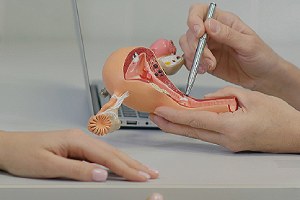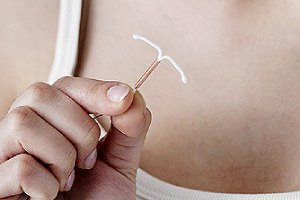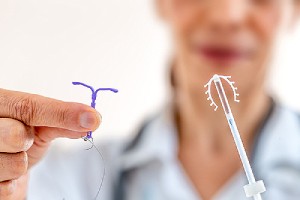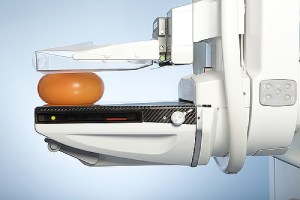 What is a pessary fitting? As women age, the ligaments and muscles that support the uterus weaken. In some cases, the support structures can become so weak that the uterus begins to sag and interfere with other pelvic organs. This condition is known as uterine prolapse, or pelvic organ prolapse (“POP”). Treatment for POP often consists of having a support device called a “pessary” inserted to provide the necessary support. Pessaries are made of soft, non-absorbent, medical-grade silicone.
What is a pessary fitting? As women age, the ligaments and muscles that support the uterus weaken. In some cases, the support structures can become so weak that the uterus begins to sag and interfere with other pelvic organs. This condition is known as uterine prolapse, or pelvic organ prolapse (“POP”). Treatment for POP often consists of having a support device called a “pessary” inserted to provide the necessary support. Pessaries are made of soft, non-absorbent, medical-grade silicone.
What Is A Pessary Fitting?
Pessary devices come in a variety of shapes and sizes. You need to have a pessary fitting with your doctor to ensure that the pessary device you use is appropriate for your condition. A pessary fitting will be conducted by your doctor during a pelvic examination. Based on the position and condition of your pelvic organs, your doctor will discuss with you the available pessary devices that are designed for your needs. Once you and your doctor have selected the appropriate device, your doctor will insert it into your vagina. After it is properly positioned, your doctor will have you perform some basic movements that will put stress on the pessary to make sure it does not slip out of place.
Once your doctor has determined that the device fits you, your doctor will show you how to insert it, remove it, and maintain it. Within two weeks of the first fitting, you should expect to have to return to the doctor’s office to have the pessary checked and any necessary adjustments made. Your doctor will determine how often you need to return to ensure that your pessary fits properly. If you need a different shape or size device, your doctor will fit you for a new one. After you have been fitted with the right pessary device, you will start to feel more comfortable immediately. The benefits of the pessary include:
Support For Uterine Or Other Pelvic Organ Collapse
 As mentioned above, a pessary is designed to provide support for your sagging pelvic organs, including the uterus, bladder and bowel. Over time, these organs can sag and droop so far that it drops down beyond the vaginal opening.
As mentioned above, a pessary is designed to provide support for your sagging pelvic organs, including the uterus, bladder and bowel. Over time, these organs can sag and droop so far that it drops down beyond the vaginal opening.
Sagging of the uterus is known as uterine prolapse. Other organs in the pelvic region such as the bladder (a condition called a cystocele) and rectum (a condition called rectocele) can droop as well. Symptoms of POP include pain or pressure in the pelvic region, pain in the abdomen or lower back, pain during sexual intercourse, a bulge at the opening of the vagina, frequent bladder infections, abnormal urination (frequency or urgency), or constipation. A properly fitted pessary can provide immediate relief from these uncomfortable symptoms.
Helps To Relieve Stress Incontinence
Urinary stress incontinence (SI) occurs when an activity such as coughing, sneezing or exercising puts more abdominal pressure on the bladder. That pressure causes a small amount of urine to leak from the tube (the urethra) that carries urine out of your body. SI is a common type of incontinence in aging women and women who have given birth. Other contributing causes include pelvic surgery and a general weakening in the muscles of the bladder and the surrounding area. When the bladder muscles weaken, the bladder can drop down into a position that prevents the urethra from closing completely. As a result, urine can leak out. A pessary can treat some cases of SI. A properly fitted pessary will put pressure on the urethra in order to hold it in its normal position.
Avoids Or Delays The Need For Surgery
 A pessary can help some women avoid or delay the need for surgery. Over time, a series of properly fitted pessaries may enable a woman to avoid surgery altogether.
A pessary can help some women avoid or delay the need for surgery. Over time, a series of properly fitted pessaries may enable a woman to avoid surgery altogether.
In some cases, however, the patient’s condition may deteriorate and surgery is often appropriate treatment for severe cases. Whether a pessary will be an alternative to surgery for you depends on your specific case. Sometimes the surgery is needed to repair weakened pelvic floor tissues. The surgeon will graft healthy tissue onto your weakened pelvic floor structures to reinforce them. Once reinforced, your body may be able to support your drooping pelvic organs. In some cases, your doctor may recommend the removal of your uterus, called a hysterectomy.
Types Of Pessary Fittings
Types of pessaries and the severity of the prolapse conditions each treat include:
- Ring – The Ring is a circle-shaped device that is the most basic and often the first type of pessary recommended by doctors for their patients. It is easy for the patient to use and maintain.
- Gehrung – The Gehrung is a U-shaped pessary designed for more advanced uterine prolapse.
- Gellhorn – The next level of prolapse severity often uses the Gellhorn pessary, which is a disk-shaped device with a small knob in the middle.
- Cube – Designed for the most advanced-stage prolapse conditions, the Cube is compacted and inserted into the vagina. Once in place, the Cube special design uses suction to support the areas affected by prolapse.
Contact An Experienced Pessary Fitting Gynecologist
For more information about POP, treatments for POP, and pessary devices, contact the specialists at Raleigh Gynecology & Wellness. Their team of experts are available to answer your questions. Get in contact with our office by calling (919) 636-6670 or schedule an appointment for an examination.

 An IUD (the abbreviation for “intrauterine device”) is a very popular form of birth control because it is safe, effective, and convenient. To get an
An IUD (the abbreviation for “intrauterine device”) is a very popular form of birth control because it is safe, effective, and convenient. To get an  Be sure to eat a light meal or a snack before your appointment so that you are not hungry, but avoid eating so much that you are uncomfortably full or bloated.
Be sure to eat a light meal or a snack before your appointment so that you are not hungry, but avoid eating so much that you are uncomfortably full or bloated. For the first few months after an IUD, many women experience mild cramping and bleeding. You can manage the mild pain with an over-the-counter pain reliever. You may also have irregular bleeding but the bleeding should not be heavy. Many women are unable to feel their IUD strings after the insertion procedure. It is important to notify your doctor if you have heavy bleeding or cramps that are not controlled by over the counter pain medications. If you have concerns about the position of your IUD, it is important to notify your doctor. Do not have sex without using a condom or other backup birth control method until you have contacted your doctor.
For the first few months after an IUD, many women experience mild cramping and bleeding. You can manage the mild pain with an over-the-counter pain reliever. You may also have irregular bleeding but the bleeding should not be heavy. Many women are unable to feel their IUD strings after the insertion procedure. It is important to notify your doctor if you have heavy bleeding or cramps that are not controlled by over the counter pain medications. If you have concerns about the position of your IUD, it is important to notify your doctor. Do not have sex without using a condom or other backup birth control method until you have contacted your doctor. Many women choose to get an IUD (“intrauterine device”) inserted by their doctor as the preferred way to prevent pregnancy. IUDs are a popular
Many women choose to get an IUD (“intrauterine device”) inserted by their doctor as the preferred way to prevent pregnancy. IUDs are a popular  Before the procedure begins, your doctor will examine you to rule out any infections, STDs, or pregnancy. You will probably have to provide a urine sample which will be tested to ensure you are not pregnant.
Before the procedure begins, your doctor will examine you to rule out any infections, STDs, or pregnancy. You will probably have to provide a urine sample which will be tested to ensure you are not pregnant.  The next step is to physically insert the IUD. To do that, your doctor will fold the arms of the IUD and place it into a small tube called the applicator tube. The applicator tube will be inserted through your cervix and positioned in your uterus. Once in place, the applicator tube will release the IUD. Its arms will unfold and it will resume its T-shape. At that point, the applicator tube will be removed, leaving the IUD in the proper position.
The next step is to physically insert the IUD. To do that, your doctor will fold the arms of the IUD and place it into a small tube called the applicator tube. The applicator tube will be inserted through your cervix and positioned in your uterus. Once in place, the applicator tube will release the IUD. Its arms will unfold and it will resume its T-shape. At that point, the applicator tube will be removed, leaving the IUD in the proper position. An IUD (the abbreviation for intrauterine device) is a popular pregnancy prevention device for women. It is a safe and effective form of long-term, reversible contraceptive. Some types of IUDs
An IUD (the abbreviation for intrauterine device) is a popular pregnancy prevention device for women. It is a safe and effective form of long-term, reversible contraceptive. Some types of IUDs  In the United States, there are two categories of IUDs available: hormonal IUDs and copper IUDs. Which type of IUD is suitable for you depends on your health and personal preferences, as explained below.
In the United States, there are two categories of IUDs available: hormonal IUDs and copper IUDs. Which type of IUD is suitable for you depends on your health and personal preferences, as explained below. The non-hormonal, copper IUD (ParaGard) is another popular form of IUD. The ParaGard IUD can provide birth control for up to ten years. It is a T-shaped plastic frame with a copper wire coiled around it. Once inserted into the woman’s uterus, it works by producing an inflammatory reaction that is toxic to sperm and eggs (ova), thus preventing pregnancy. It provides immediate birth control.
The non-hormonal, copper IUD (ParaGard) is another popular form of IUD. The ParaGard IUD can provide birth control for up to ten years. It is a T-shaped plastic frame with a copper wire coiled around it. Once inserted into the woman’s uterus, it works by producing an inflammatory reaction that is toxic to sperm and eggs (ova), thus preventing pregnancy. It provides immediate birth control. A mammogram is an x-ray of the breast. It is performed using a safe, low-dose x-ray machine designed to take images of your breast tissue.
A mammogram is an x-ray of the breast. It is performed using a safe, low-dose x-ray machine designed to take images of your breast tissue. Regular mammograms are critically important to women’s health. An annual mammogram is the best way for doctors to find breast cancer early. It is not unusual for a mammogram to detect cancerous tissue in the breast three years before it is large enough for you to feel during a manual examination.
Regular mammograms are critically important to women’s health. An annual mammogram is the best way for doctors to find breast cancer early. It is not unusual for a mammogram to detect cancerous tissue in the breast three years before it is large enough for you to feel during a manual examination. Your doctor may order a diagnostic mammography for you. A diagnostic mammography is used to investigate changes in your breast such as a lump, breast pain, an unusual skin appearance, nipple thickening, or nipple discharge. It frequently includes x-ray images of the affected breast in addition to those done during a screening mammogram.
Your doctor may order a diagnostic mammography for you. A diagnostic mammography is used to investigate changes in your breast such as a lump, breast pain, an unusual skin appearance, nipple thickening, or nipple discharge. It frequently includes x-ray images of the affected breast in addition to those done during a screening mammogram.